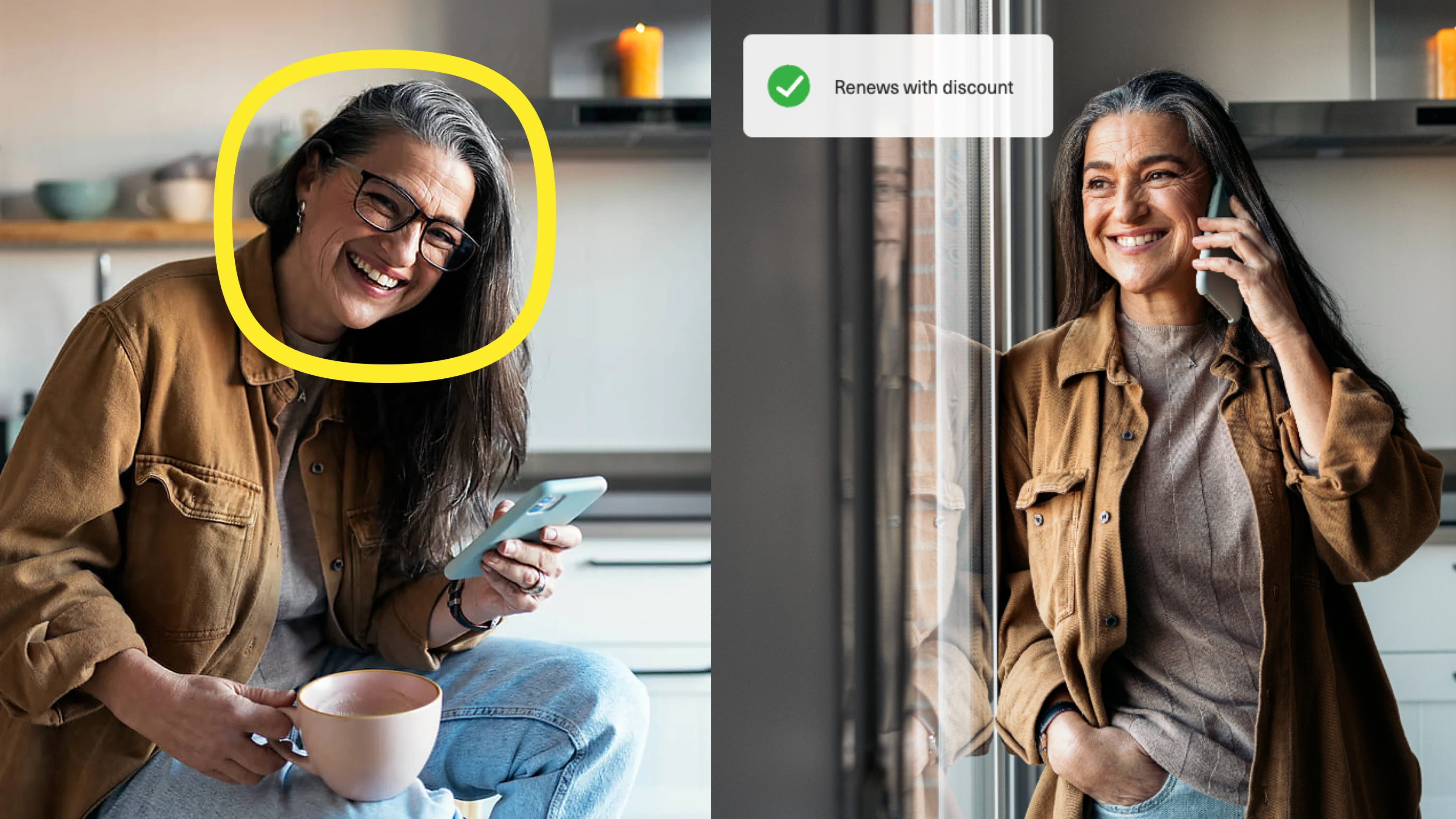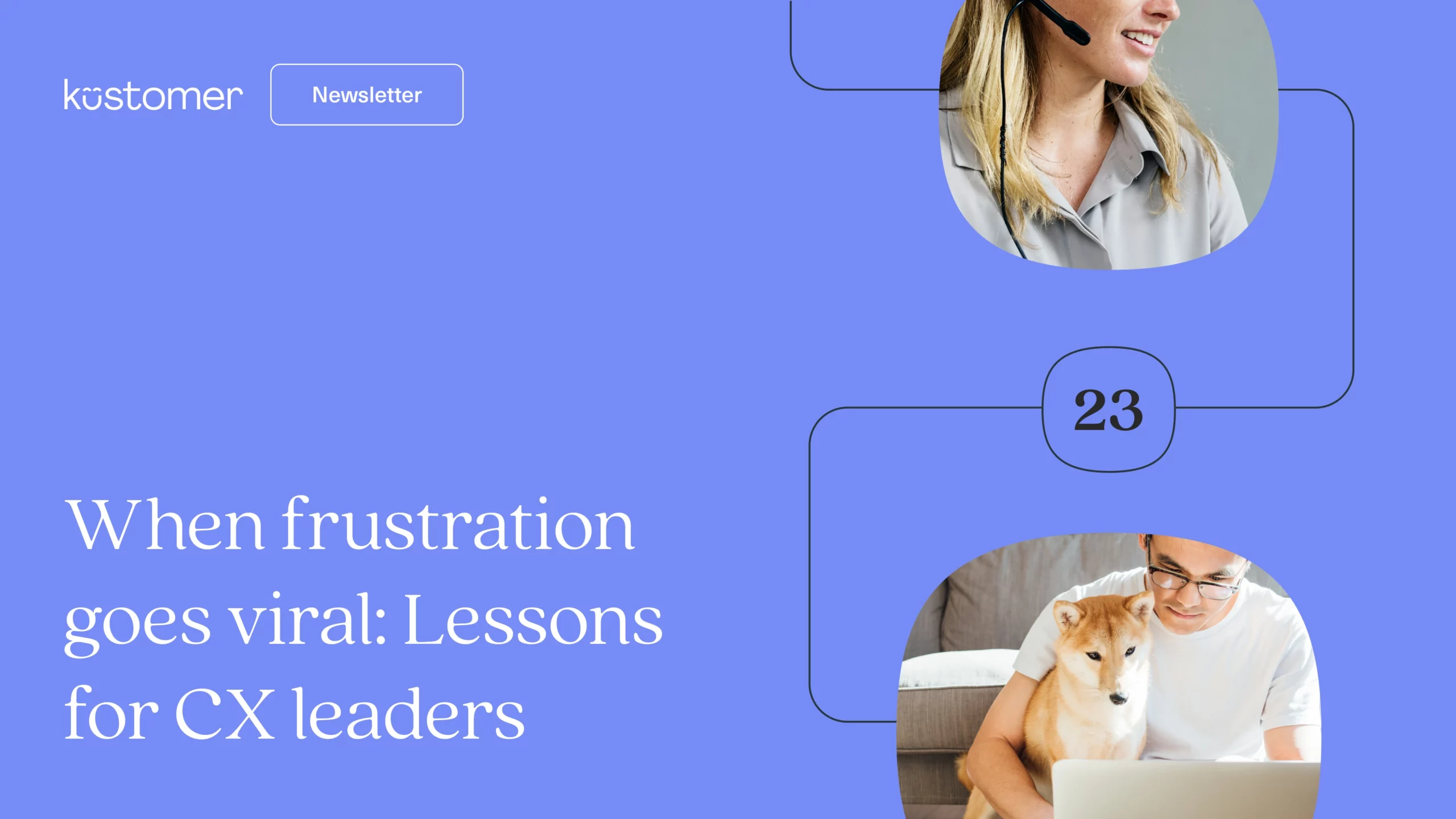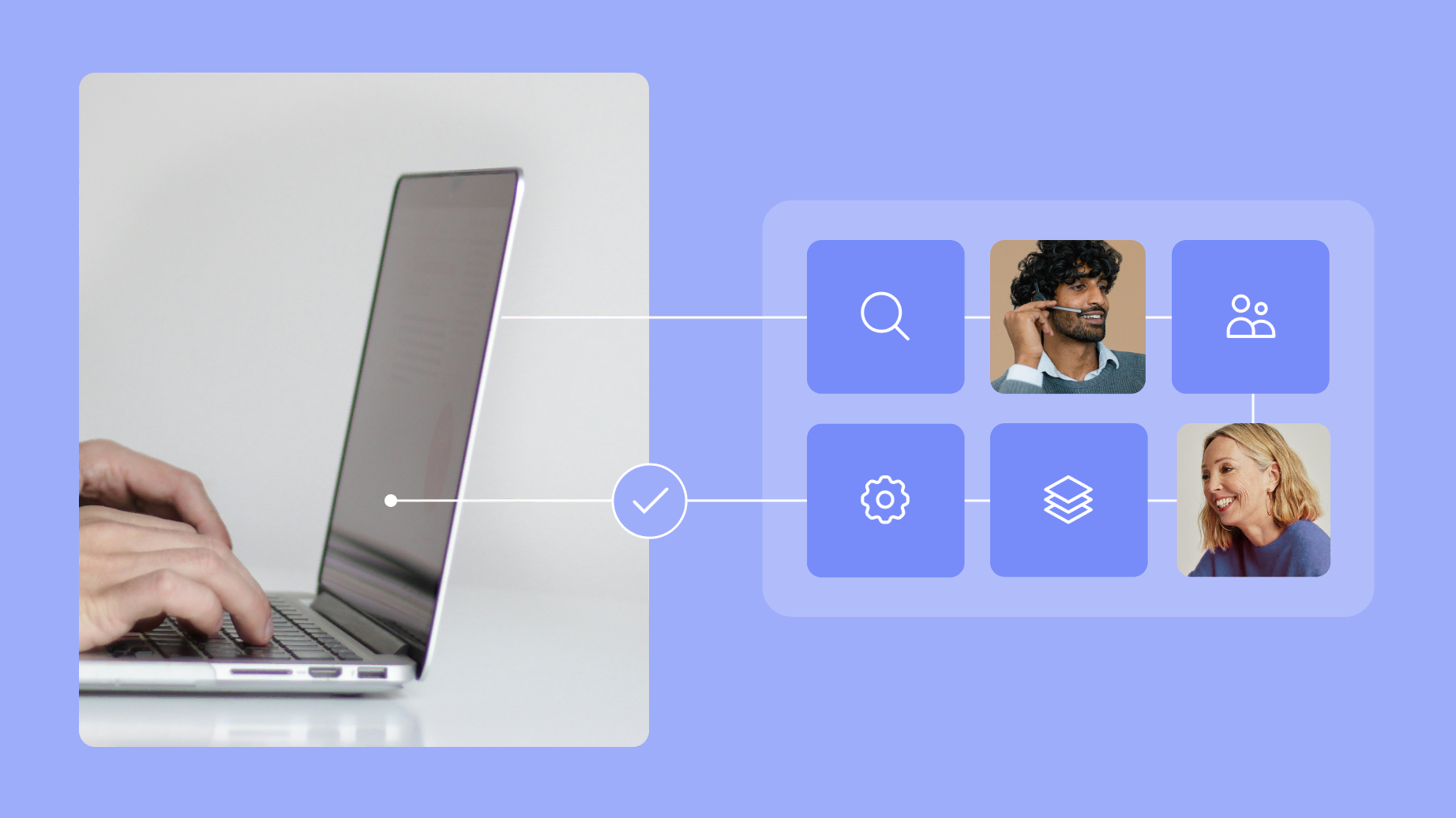I sat down with Jared Loman, the Head of CX and Operations at Kick, an accounting automation tool. Jared is a former colleague whose experience spans leading CX at companies in the B2B Saas space, powered by a technical background. Let’s dig in!
This interview has been edited for clarity.
Hope: At Kajabi, where we worked together, you oversaw customer experience during a really significant growth period for the organization. So I wanted to start us by asking, what are your best recommendations for scaling CX teams without compromising the quality of service?
Jared: Just to set the picture here, I am about six to eight months into my role at Kajabi, and I end up taking over the role of VP of Customer Experience. So I have a little bit of context on the company, but not a lot of context on what's happening across the entirety of CX.
We've got a company that's seven years old, and about 20 to 30 people spread throughout the globe working in CX. And when I go to start digging into things and seeing what's up because that's usually the first step - you have to figure out what's going on.
I have an entrepreneurial background. I wanna know what's happening before I start taking some action and shifting things. I realized that we have almost no data. We had a very vanilla install of our support tool, we have CSAT, and that is it.
So you can imagine the way I felt when literally a week after I take over this role, we see a 40% month over month growth, and this is actually just the beginning. It continues on from there. We were clearly not equipped. We were not set up to take on the amount of growth that we saw even in that month. And so I really started my position operating off the back of my heels.
This was about two months prior to the global pandemic. For a knowledge content creator type industry it was a season of massive growth. We continued to see growth in the hundreds of percents on a month over month basis in terms of our ticket volume. And this is all while just getting started.
So in terms of not compromising that quality, if I could do this all over again, it's getting that data in place as quickly as possible - making sure that you know your numbers and making sure that you have a solid handle on where you need to deploy resources and how many resources you have to deploy. That’s the first step to actually figuring out how to actually solve some of the customer problems that you're going to encounter because without those numbers, you're pretty much operating in the dark.
Hope: That is huge. If you don't have the tech in place and you don't have the data in place, then you have to be reactive rather than proactive. So that’s a great recommendation. Even if organizations have a pretty good tech stack or data stack, there's always room for improvement or tweaks or optimizations.
Kajabi as an organization was one of the first to serve a new niche, which as you mentioned is online knowledge content creators. So, I am wondering- what are some of the lessons that you've learned about designing a CX strategy tailored to these niche audiences rather than like a general consumer?
Jared: It really comes down to three things. First - there is no one size fits all approach. Moving from content creation to now the bookkeeping and accounting space, two industries that are each uniquely approached from a CX perspective.
In the bookkeeping and accounting world, you're dealing with people who are more interested in very specific financial related information related to how they operate their business, whereas in the content creation space, the span of scope that we needed to cover was everything from “How do I actually start this business? I just quit my job. What do I do next?” to “I have this in-depth technical problem due to an API integration from some 30 third party tool.”
The reality of this was at that point in time, AI was in its infancy. Today we're surrounded by a ton of different tools and offerings, certainly much more advanced than they were at that point in time.
But it was really designed to answer short, very transactional questions at that point. So, the first learning for me was there is no just magical approach to or one size fits all approach to solving a problem. You really have to know your audience and understand where those pain points are for them. So some of the more practical things that we actually did kind of carries on from the previous question of how do we scale a CX org during seasons of rapid growth.
One of the things that we did during that time was we realized that there was a major sticking point for people who are just starting out on the platform - not entirely uncommon. With Kajabi, you have a group of people who are starting a business, in particular a group of people that probably have never ran businesses before.
So one of the more tactical things that we did in this space , because we took the time to learn and know and understand our audience, was we redeployed many of our resources , which were small at that time , to conducting live calls. This was mainly just reacting to the fact that we were growing hand over fist every day and we couldn't respond quick enough.
So we needed a way to bring people in, answer their questions, but also meet them where they were at. By learning and knowing the audience, knowing what the steps are that they take to get from point A to B when using your product or service, that really helps you focus on defining a strategy that'll be most applicable to them.
Even if you've had a previous job in the space, you're probably not going to have this playbook that's just going to work perfectly if you're in an entirely different industry or space.
Hope: I love what you said about the playbook and that can even change for an organization - anything where they're offering new products or services, those touchpoints will change. At Kajabi we worked to find the “next best actions” which were the things that if people did them, they were more likely to stick around and succeed with the product or service, more likely to get their business off the ground. That was one of the projects that the CX and the marketing team worked on together, trying to figure out what does it take for someone to stick around, and then how can we educate folks on what they need to do to see that success? It’s that nice win-win.
Jared: Yeah. I love the win-wins too. That is the root of every successful business , is a win for the customer and a win for the business.
Hope: Now chatting about Kick, the organization that you're with now, it's focused on the automation of accounting. That's a complicated and critical area of the business, but it's perhaps a little unglamorous and maybe something that people don't really get excited about thinking about. So what are your goals and priorities when you're trying to deliver a great customer experience with a tool that's meeting a business need?
Jared: I Iove the question. You hit the nail on the head. There is nothing glamorous about accounting or bookkeeping, but realistically, we're trying to change that. The first level of this is actually maybe a little less CX, but more focused on the product itself.
One of my favorite customer quotes is something to the nature of, “Kick is like the Apple of bookkeeping,” where essentially we offer a very polished product that makes the bookkeeping an experience for the small business owner - dare I say - a delightful experience.
And I actually come at that from the perspective of being a small business owner myself. Spent the first decade of my career running my own business feeling these pain points close to home in terms of the problems that we're solving.
So, back to the root of your question in terms of what are some of the goals. So with Kick from a customer experience perspective, our customers come to us with very personal questions. They're usually actually not questions around the product like you might find in the traditional SaaS situation. The product's actually pretty intuitive.
One of the things that is actually broadly applicable to anyone in the CX space here and one of the things that I've seen missing most when it comes to tooling is that agents are frequently missing context. When you're going in to provide an answer to a customer, you don't have the information you need at your disposal to effectively and quickly respond to the needs of the customer. So, my goals at Kick are really to eliminate those problems.
It's to have not only a very personalized experience for that customer because they're asking things that are very context specific. You can't answer a question about someone's books unless you have context on their books.
My goal here is to do that on another level to make sure that anytime a question is being answered, that the person answering it has the necessary context to provide an incredible experience because it's a combination of those things that is the perfect recipe for success on a customer experience level.
Hope: That's huge. I took accounting recently as part of my MBA, and it was really challenging. Many small business owners don't have that training and they turn to a tool like Kick or another in the industry. They are going to have questions and they are gonna be more advanced than some other services that the questions may be a little bit more automate-able.
So I really love that you're focused on personalization. I think we all know that that's where CX is heading as we're going to have automation tools to handle the easy questions. The role of the CX agent is going to be focused on providing that tailored support especially when it comes to B2B tools. That's just where we're headed.
Now taking it a little bit more general about your experience at different tech companies, I'm wondering how you ensure that customer experience teams are collaborating effectively with product and engineering because that's so critical when building business tools. How can you foster that alignment between departments?
Jared: First of all, I think that that is the role of CX. If you sell a product, CX is the frontline. They are the voice of the customer. Granted, they also have a backwards facing bias, but they are the first people to hear when something goes wrong with the product. They are the first people to have a true understanding of what the customer actually needs, not just what they say they need.
Due to the interactions that they're having, they're speaking with customers who are actively using your product. So in order to facilitate those relationships, I approach this, maybe a little bit different than most because I actually have an engineering background.
So, one of the first things that I did at Kajabi was I actually established a role. We called it the tech lead. That person was intended to be the ultimate SME. It was the person who knew and could speak both the tech language as well as the customer language. Over the course of the years, that role proved to really be incredibly critical to facilitating and fostering those relationships.
Ultimately, what that resulted in is there was always a clean channel for various customer issues to work their way from the customer reporting it onto the engineering team who may be troubleshooting and triaging the issues. That results in a really strong relationship amongst teams.
Interestingly, I found one of the most challenging relationships, and this may be due to my personal bias , was actually the CX and Marketing connection. That was probably one of the most interesting relationships to facilitate because in the world where marketing is sending out communications and drawing people in, who actually responds to those? It's usually the CX team. So, one of the learnings for me was actually to really invest there. It was something that I didn't do. I was over focused on the product and engineering relationship, and maybe as a result, kind of let that marketing and CX relationship slide. But that's another incredibly critical relationship that needs to have very strong ties to be effective.
Hope: Absolutely. Especially in marketing they're talking about the product and some marketers may have a better understanding of the product or service than others, and sometimes they only need the kind of a surface level to be able to speak to it.
So it is really important to have that kind of deeper understanding and foster that collaboration between those teams because you don't want to set any potential customers up for disappointment if they misunderstood what the product could or couldn't do, or how easy something is or was not to use. It’s so important to really understand the product or service that you're selling if you're going to be responsible for making people happy using it.
You mentioned a couple times things that were kind of low-tech, low-lift things like a Slack channel or just having calls to address customer needs. In our kind of high-tech society, it feels like there needs to be a high-tech solution for everything. But very often, just getting things off the ground - it's a Zoom call, a Slack channel, if you're in person, walking over to someone's desk and just chatting it out. Sometimes we overcomplicate things and keeping it simple can help you focus on the problem at hand. And then you can scale up the solutions as needed to foster that work and that collaboration.
Now for our last question, I know that you cofounded an organization yourself, and that'll give you a really unique perspective as a leader. So how does your experience as a cofounder shape how you approach the customer experience?
Jared: I think you teed it up perfectly when talking about just the scrappiness of getting the job done. More than anything, my experience as a cofounder was really a lot of lessons learned. Ultimately my company ended up failing after about a year and a half, but it was a plethora of wonderful learnings that have helped me but I would really summarize them all into: “get the job done as quickly as possible before you overbuild.” I've made the mistake probably due to my engineering background, of trying to over engineer a solution, ad infinitum. You can do that pretty much endlessly, but you're only going to see meaningful results for maybe 20% of that journey.
So that cofounder experience helped me learn you have to get something out there. Usually, the way to do that is just get the quickest thing done. It's usually not the best thing. Build and iterate and over time you're ultimately going to get to the right solutions. Have that bias for action, get the rough draft on the table, and start working with it as quickly as possible.
Hope: I think that makes a lot of sense that getting something out the door is just the most important thing. You can always improve upon it later if something proves out to be successful or or worth the time invested. But I think that's really helpful especially for people who have worked at bigger companies that can move a little bit more slowly or people who haven't ever been in sort of an entrepreneurial role. Bringing that energy into it can sometimes be what the team just really needs.
Thank you so much, Jared, for taking time to share your experience with all of us today.




